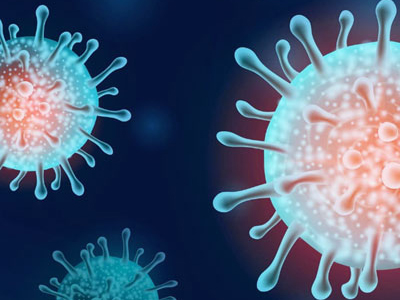The Novel Coronavirus, COVID-19, that was first detected in Wuhan, China has been detected in more than 100 countries worldwide and the "coronavirus disease 2019" (abbreviated "COVID-19") is resulting in havoc worldwide. It has not only caused fatality in huge numbers, but it has also resulted in economic losses globally. The development of a vaccine or a drug to combat COVID-19 is imperative.
Development of the vaccine for COVID-19 is complex and involves various steps :
1. Identification of the antigen and adaptability of the virus in cell culture.
2. Development of the recombinant vaccine.
3. Determination of the immunogenicity and safety of the vaccine candidate using animal models.
4. Early and late clinical studies.
WPI offers solutions for many of these steps.
Developing Viral Cell Culture
The first and most important step of vaccine development involves growing the virus. Since viruses do not grow in artificial media, they must be grown in cell cultures. While the cell culture is developing, it is necessary to routinely monitor the differentiation status of the cell layers, look for confluence and formation of tight junctions. Transepithelial Electrical Resistance (TEER) measurement using Epithelial Volt/Ohm Meter, EVOM2, has been the most reliable method to determine the health of an epithelial or endothelial monolayer in any cell culture study. The health of the cellular layer is determined based on the resistance and voltage across the cellular layers. High resistance across an epithelial layer indicates the presence of tight junctions and a confluent layer, whereas low resistance indicates a leaky epithelium.
The EVOM2 system, along with the electrodes, operates in two modes – Resistance and Voltage.
Fluid Handling Solutions
For creating the recombinant vaccine, dispensing and transferring fluids becomes essential. The UltraMicroPump with SMARTouchTM controller (UMP3T-1 or UMP3T-2) offers fluid handling solutions during the construction of the plasmids and the development of the recombinant vaccine.
WPI’s versatile microprocessor-controlled injector, UltraMicroPump, and sub-microliter injection system (NanoFilTM) ensure reproducible and precise delivery of microliter to nanoliter volumes with high efficiency. Together they have been widely used for transferring viral vectors and have become the standard practice.
| Features | Benefits |
|---|---|
| Accepts a wide variety of syringes from 0.5 µL to 1 mL | Highly versatile and capable of transferring fluids from nanoliter to microliter volumes. You can configure volume and flow rates. |
| Very low dead volume (0.5 µL or less) | Eliminates waste and makes the system highly efficient |
| Graphic display with SMARTouchTM touch screen controller | Rapid set up and "intelligent," automated, easy-to-use interface for controlling up to two UMP3 syringe pumps |
| Footswitch (Optional) | Operate with the foot, leaving the hand free for other operations |
Animal Model Experiments
The development of human vaccines requires the use of animals for research. WPI also offers :
- Super accurate Microprobe Thermometers - for single (BAT-12R) or multiple input (BAT-10R/LOP) for measuring temperature.
- Single or high-throughput non-invasive blood pressure measurement systems for mice (II-MRBP-M) and for rats (II-MRBP-R) – accurately monitors, records, stores or exports real time systolic, diastolic, mean and heart rate.
- Invasive monitoring system for arterial or venous blood pressure, force and temperature.
- ECG monitoring system, CardioPhys ECG.
- Surgical instruments such as forceps, scissors and more.
- High level disinfectants like Cidex and sterilization equipment.

